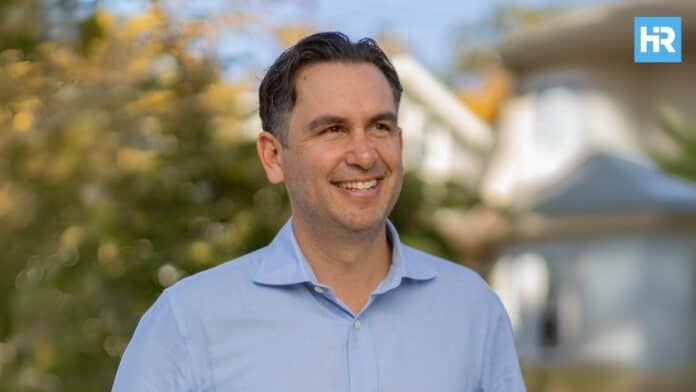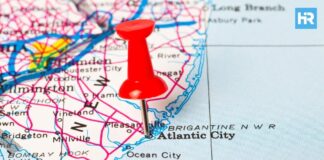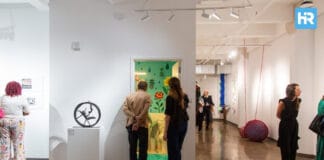Jersey City Mayor Steven Fulop has a new idea to combat New York City’s congestion toll, which has been causing frustration.
His “reverse congestion pricing” plan would charge drivers coming into New Jersey from New York.
Like New York charges people driving into Manhattan, New Jersey would start doing the same for those crossing the border.
Fulop, also running for governor, thinks this is a fair way to balance things out and force both states to find a better solution.
- Jersey City Mayor Steven Fulop wants to introduce a “reverse congestion pricing” toll for cars coming into New Jersey from New York.
- The revenue from the proposed toll would be directed toward improving New Jersey Transit.
- Fulop’s plan could change traffic patterns in both New Jersey and New York, just like NYC’s toll has, and might encourage both states to find a fairer way to deal with transportation and funding issues.
New York City’s Congestion Pricing Toll
New York City’s congestion pricing system, which started on January 5, 2025, charges drivers who enter Manhattan below 60th Street.
The toll costs $9 during peak hours if you have an E-ZPass and $13.50 if you don’t.
Overnight rates are cheaper, with E-ZPass users paying $2.25 and others paying $3.30.
Motorcycles get charged half the car rate, while trucks and buses pay more depending on their size.
However, some exemptions exist, like emergency vehicles, school buses, and certain disabled drivers.
Drivers with low incomes who pay the toll 10 times a month can also apply for a discount for the rest of the month.
The city believes this toll is necessary to reduce traffic, improve air quality, and raise money for New York’s Metropolitan Transportation Authority (MTA).
New Jersey Is Unhappy with NYC’s Congestion Pricing Toll
That said, it’s left New Jersey commuters upset because many feel it unfairly targets them.
Since they rely on driving to work in Manhattan, the toll adds another cost to their daily expenses.
For this reason, Fulop thinks it’s time for New Jersey to push back by introducing its toll for cars entering the state.
He believes this could bring in money to help fix New Jersey’s underfunded transit system and improve relations between the two states.
Fulop’s Reverse Congestion Pricing Plan
Fulop’s reverse congestion pricing proposal suggests setting up toll stations at major crossings into New Jersey, including the Holland Tunnel, Lincoln Tunnel, and George Washington Bridge.
This way, New Jersey could collect revenue from the heavy traffic coming into the state every day.
According to Fulop, all of this money would go straight into improving New Jersey Transit (NJ Transit), which has been dealing with constant delays, cancellations, and reliability problems.
He says NJ Transit is in bad shape and needs serious investment.
Until the system is reliable enough for people to trust it, they won’t give up driving to work.
Missed Opportunity for NJ
At first, there was a chance New Jersey might benefit from New York’s congestion toll system.
The plan included a possibility for New Jersey to get hundreds of millions of dollars to help offset the impact on its residents.
But because of legal battles, that deal never happened.
Now, Fulop sees his reverse toll as a way to recover that money and use it to fix NJ Transit instead.
Exemptions and Concerns
Although the details of the reverse congestion pricing plan are still being developed, Fulop has mentioned that it might include exemptions or discounts for certain groups, similar to New York’s system.
Nonetheless, it’s unclear if New Jersey residents would also have to pay the toll when they come back to their home state, just like some New Yorkers do under their new system.
This unanswered question has raised concerns for many drivers.
Early Impact of New York’s Congestion Pricing
In the first few days of New York’s congestion toll, the results were mixed.
While traffic going into Manhattan south of 60th Street was lighter, particularly at the Holland and Lincoln Tunnels, other roads like the FDR Drive, exempt from the toll, saw an increase in cars.
If New Jersey moves forward with its own reverse toll, similar traffic pattern shifts could also happen within the state.
Fulop Criticizes Governor Murphy
This plan addresses some of the biggest issues between New York and New Jersey, sparking much debate.
Fulop believes this toll would help New Jersey fight back against New York’s policies and bring in much-needed money for transit improvements.
He also criticized New Jersey’s current governor, Phil Murphy, for not doing enough to secure funding for NJ Transit when New York first introduced its toll plan.
How This Could Affect Drivers and Transportation
The proposal means drivers might have to pay a toll when entering New Jersey from Staten Island, Bergen County, or Hudson County.
The system would likely include electronic toll booths or gantries similar to New York’s setup, with different rates depending on the time of day.
Ultimately, Fulop hopes this will push New York to rethink how their tolls affect neighboring states.
At the same time, it could bring in the money New Jersey needs to make NJ Transit more reliable and convenient for everyone.
While some see this as a smart move to protect New Jersey residents, others worry it could increase tensions between the two states.
However, there’s no doubt that big changes in regional transportation are on the horizon, and both states will need to find common ground to address issues of funding, congestion, and pollution.






